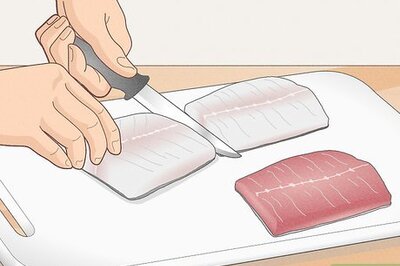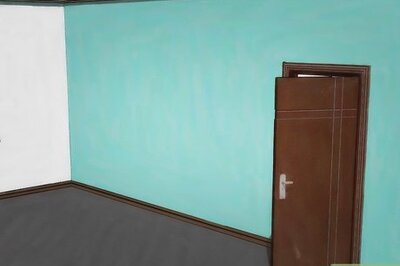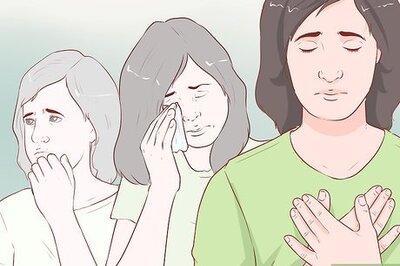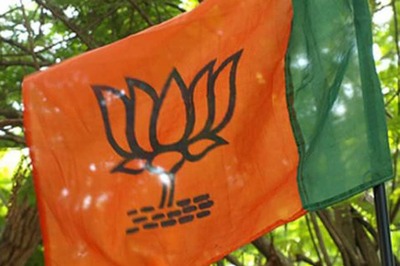
views
The findings of the exit polls aired on Sunday evening have sent the ruling Biju Janata Dal (BJD) think tank scurrying back to the drawing board and redraw its post-poll strategy, and encouraged the BJP to start dreaming big in Odisha.
None of the exit polls for the Lok Sabha elections done by various agencies have made any projections about the number of seats going to the various parties in the Assembly elections in the state, while the only two local media houses – Sambad-Kanak TV and MBC TV – that conducted exit polls for Assembly elections, have predicted a comfortable majority for the BJD — about 100 to 110 and 85 to 95 in the 147-member Odisha Assembly.
But this hasn’t stopped the BJP from boasting that it would form the next government in the state. “I am convinced that our party is going to form the next government,” BJP state unit chief Basanta Panda told media persons after a meeting of party leaders on Monday afternoon.
Even if Panda’s words turn out to be just false bravado and the exit polls done by the two local agencies are proved close to the actual results on May 23, the BJD still will have plenty to worry about because of the numbers that the ‘national’ polls are projecting for the Lok Sabha elections. Worryingly, the polls have projected a tally ranging from as low as 2 (India Today-Axis) to a high of 15 (India TV) for the ruling party (out of a total of 21).
To put things in perspective, the BJP is shown winning between 6 (News 18-IPSOS) to a highest of 19, a huge gain over its tally in 2014, when it won just a solitary seat (Jual Oram: Sundargarh) even if we take the lowest number. In a sharp contrast, the BJD stands to lose at least six seats it won the last time even if it gets the highest number of seats projected by any exit poll.
The difference of six — more if the mean figure is to be taken into account — means that the BJD will have to get off the high horse it has been riding of late and scale its ambitions down to more realistic proportions. At the height of the election campaign last month, BJD supremo and chief minister Naveen Patnaik had boasted that the party would win all 21 Lok Sabha seats in the state and play a ‘key role’ in the formation of the next government. More recently, senior BJD leader and cooperation minister Surya Narayan Patro had raised the stocks even higher, saying; “The people of India and Odisha want to see Naveen Patnaik as the Prime Minister of the country!”
Both these boastful claims were obviously based on the calculation that the general elections would throw up a hung Parliament, in which case any party with even a dozen seats could aspire to become the Kingmaker — and maybe even the King, if the numbers are stacked up favourably. But with all polls predicting a clear, unambiguous majority for the BJP-led NDA, that hope has been rudely dashed — at least till May 23. Narendra Modi-Amit Shah may still seek the support of Patnaik, but the latter would be in no position to dictate terms if the actual results go the exit poll way.
The findings of the exit polls for the simultaneous Lok Sabha and Assembly elections in Odisha hold no real surprises for the people of the state. Everywhere one went during the polls — and even after they were over — one got the distinct impression that the voters, in a clear departure from their past voting preferences, have voted for the BJP (Modi to be particular) in the Lok Sabha elections and for BJD (Patnaik to be more precise) in the Assembly polls.
But the findings certainly don’t augur well for the ruling party in Odisha. After raising its tally along with its vote share in every election since 2000, the BJD, for the first time, looks set to slump on both scores. If the vote shares of the three major parties projected by Republic TV-VMR — the only exit poll to do so for states— are anything to go by, it would mean two tectonic and parallel shifts in Odisha politics.
First, the BJP would replace the Congress as the principal challenger to the BJD in the state. Second, the gap between the BJD and BJP, a seemingly unbridgeable 23% in 2014, would come down to just about 3% this time (BJD-33.13%, BJP-30.20% and Congress 20%). If that indeed is the case, the BJD can hardly breathe easy even if it manages to hold on to power for an unprecedented fifth term, with or without the support of others.
Exit polls have gone horribly wrong in the past, most notably during the 2015 Bihar elections, and BJD would be sincerely hoping that they would do so this time too. But there is little doubt that its days of unfettered, unchallenged power are now well and truly over. The party would have to contend with a much stronger – and vocal - opposition in the Assembly than it has faced so far.
(Author is a senior journalist. Views are personal)




















Comments
0 comment